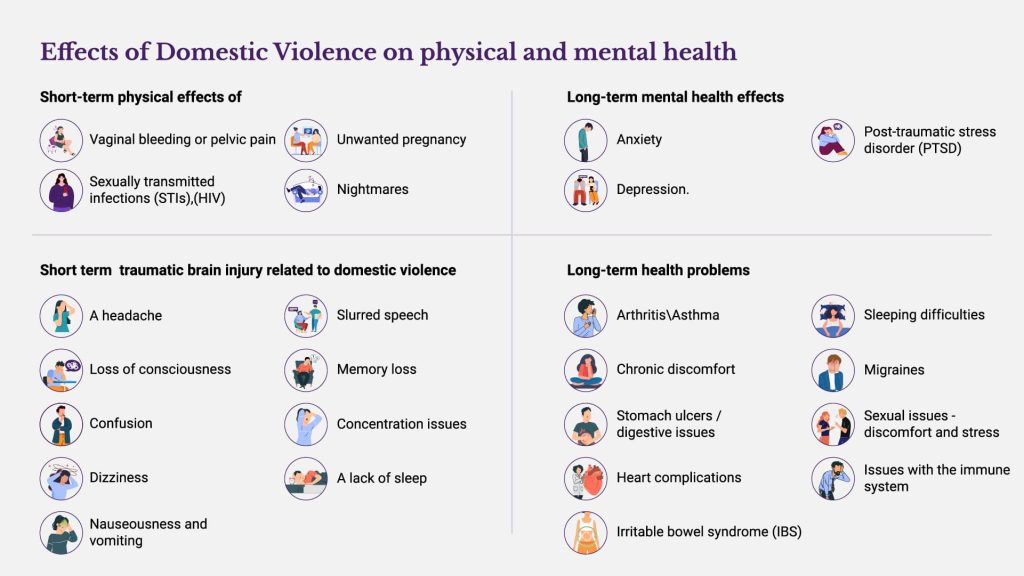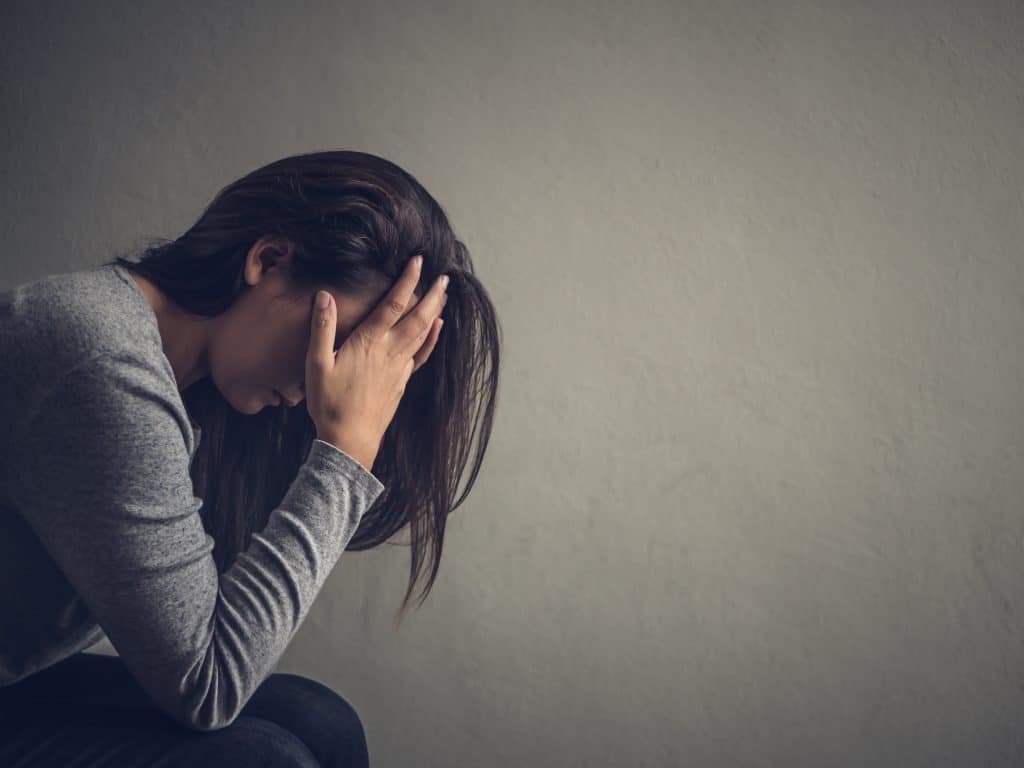by MSG Diana D. Layne, US Army
After years of being with an intimate partner, one rarely entertains the thought of them causing harm. That individual supplied everything – the roof over their head, food to eat, and a life they had never imagined. However, one fateful night, when dinner was not ready on time, everything changed. Domestic violence is when one member of a family or partner exerts dominance over another. The Centers for Disease Control and Prevention (CDC) states that domestic violence includes “physical violence, sexual violence, stalking, and psychological aggression including coercive acts by a current or former intimate partner” (Huecker et al., 2022). Even though ten million people are victims of domestic violence each year, there are not enough resources that are both readily available and secure for those who have suffered such abuse.
Background of Domestic Violence
Since the 18th century, society recognized domestic violence as a significant social issue (Dobash et al., 2018). In the past, the police or the courts did not take domestic violence seriously due to outdated beliefs that husbands had the right to control their wives (L (Ed), 2018). This perspective reflected societal attitudes that perpetuated gender inequalities and normalized violence within intimate relationships. However, research conducted in the last seven years has highlighted the detrimental impact of domestic violence on victims, including physical and psychological scars (Johnson, 2019). It has become clear that domestic violence affects individuals across diverse backgrounds and has far-reaching consequences for individuals, families, and communities (Caetano et al., 2020; Breiding et al., 2019). In response to historically neglecting the issue and increasing recognition of the severity of domestic violence, policymakers, service providers, and professionals from law enforcement, social services, and healthcare have implemented legal reforms, support services, and multi-disciplinary approaches. (Bachman et al., 2018). These efforts aim to protect victims, supply support, and hold perpetrators accountable.

The Effects of Domestic Violence on Women
Women who are victims of domestic violence often suffer long-term psychological and emotional consequences in addition to any physical harm. Those who have survived domestic violence often struggle with a wide range of psychosomatic illnesses, including bulimia, anorexia, chronic pain, and sleep disturbances. As a result of the abuse, they have suffered at the hands of their partners, many abused women struggle to conduct even the most basic of daily tasks. They are less likely to be able to leave abusive relationships if they lose their jobs because of injuries or medical appointments that require time away from work. They might feel guilty about their partners’ abuse, believe they are not deserving of love, and have a severely lowered sense of self-worth as a result. These women’s low sense of self-worth causes them to withdraw from social activities and the company of those they care about (Gluck, 2021). The effects on men after domestic violence create a similar issue to women.
The Effects of Domestic Violence on Men
According to the literature, male victims of domestic violence and abuse are less likely to seek help until they are at a crisis point. Those who are male are more likely to fear repercussions to their masculinity if they report abuse, and they worry that no one would believe them if they did. Their commitment to or concern for their partners and their fear of agnostic believers or perceived as weak often kept men in abusive relationships. Others could not muster the motivation to leave because they were too discouraged, hopeless, or traumatized. Also, many victims were unaware that help was available to them. Even when people were aware of public interventions, they believed these interventions would not be effective. The results show a potential need for male-specific programs. The authors note that men may be less likely to seek help if they perceive domestic violence services exclusively for women survivors (Mathias, 2019).

Literature Review Summary
Background of Domestic Violence Since the 18th century, the problem of violence recognized within the home is a significant social issue. The police or the courts have not always taken the history of domestic violence seriously. Because of the outdated notion that a husband has the right to do whatever is necessary to control his wife as if she were his property, as well as the belief that responding to domestic disputes was not real police work, this situation has arisen. As a result of the abuse, they have suffered at the hands of their partners, many abused women struggle to conduct even the most basic of daily tasks. The effects on men after domestic violence create a similar issue to women. According to the literature, male domestic violence and abuse victims are less likely to seek help until they are at a crisis point. Men often stayed in abusive relationships out of a commitment to or concern for their partners and out of fear that they would not be believed or seen as weak. The authors note that men may be less likely to seek help if they perceive domestic violence services exclusively for women survivors.
Diversity Perspective
It is important to consider the intersectionality of identities and how they can affect experiences of domestic violence and survivorship to expand on the diverse perspective of domestic violence and the unpaved road survivors face. This will allow for a more comprehensive understanding of survivors’ challenges. The term “intersectionality” refers to how various identities (such as race, gender, sexuality, ability, and socioeconomic status) intersect and interact to create one-of-a-kind experiences of oppression and privilege.
For instance, Black women may be at a greater risk of experiencing domestic violence due to the intersection of racism and sexism and historical trauma resulting from slavery and systemic oppression. These factors may all contribute to an increased likelihood of experiencing such violence. In addition, immigrant survivors may have difficulty accessing support due to language barriers, fear of deportation, or a lack of familiarity with local resources. This can make it difficult for immigrant survivors to receive aid. Additionally, when survivors with disabilities try to gain access to resources and support, they may meet other obstacles, such as physical barriers when accessing services or a lack of accommodations that meet their specific needs. Transgender and nonbinary survivors may also face more obstacles unique to them, such as discrimination and harassment from service providers or an absence of support affirming their gender identity.

Other obstacles, individuals who have survived domestic violence often face a challenging path to recovery. This can include navigating the legal system, coping with traumatic experiences and mental health challenges, and building their lives after leaving an abusive relationship. There is a possibility that survivors will continue to struggle with issues relating to financial stability, housing, and child custody. Taking a survivor-centered approach to these challenges is important, prioritizing the needs and experiences of survivors from various backgrounds. This is the best way to address these issues. This can include supplying culturally competent services, creating support systems that are inclusive and accessible, and working to dismantle the systemic barriers that perpetuate domestic violence and hinder survivors’ ability to heal and rebuild their lives. Survivors of domestic violence can heal and rebuild their lives. In addition, we must give survivors a platform to share their stories and make their experiences the focal point of our conversations and efforts to end domestic violence.
Ethical Perspective
From an ethical standpoint, individuals must recognize that domestic violence violates fundamental human rights and should not tolerate it in any form. One should regard taking this position as a matter of great seriousness. In their efforts to heal and move on with their lives, survivors of domestic violence often meet significant obstacles. The inability to secure stable financial footing, the experience of traumatic events, and cut-off from their social networks are all examples of these challenges. In addition, survivors of domestic violence may have difficulty gaining access to resources and support, particularly if they come from marginalized communities. This is especially likely to be the case in situations in which the victim was a minority. For instance, the inability to communicate due to a language barrier or the absence of services that are sensitive to the survivor’s culture may prevent survivors from seeking aid or receiving the necessary support. Additionally, survivors may face judgment or stigma from the communities in which they live, which can further worsen their traumatic experiences and slow down the healing process.
The trauma and effects of domestic violence can be long-lasting and challenging to overcome, making the road to recovery difficult for those who have survived and are trying to rebuild their lives. Instability in one’s financial situation, social isolation, and mental health issues such as depression, anxiety, and post-traumatic stress disorder (PTSD) are all potential obstacles many survivors may face to rebuild their lives. It is our moral responsibility, as members of this society, to help individuals who have been victims of domestic violence and to work toward ending the conditions that lead to such violence in the first place. This may include making people aware of the prevalence of domestic violence and its effects, providing survivors with resources and support, and holding perpetrators accountable for their actions. It is also essential to acknowledge the intersectionality of domestic violence and to find solutions to the specific problems met by people excluded from society or at a disadvantage because of factors such as their racial or ethnic background, their gender identity, their sexual orientation, or their socioeconomic standing. This needs a dedication to social justice and a willingness to confront the structural inequalities that play a role in the problem of domestic violence.

Domestic violence is a serious violation of human rights, and the military must make it clear that it will not tolerate such behavior under any circumstances (Smith, 2019). Applying ethical and moral principles to all aspects of a soldier’s life, not just on the battlefield (Jones, 2020). The military can and should do more to combat domestic violence and its far-reaching effects on society. Primarily, the military should provide its members with training in domestic violence recognition and reporting. Train leaders to recognize the warning signs of abuse and how to respond effectively (Johnson & Anderson, 2018). It is essential to learn about the emotional and physical effects of domestic violence and the dynamics of power and control.
The military should also supply resources, support networks, and services to domestic violence survivors (Miller et al., 2021). This includes working with civilian survivors’ groups. Survivors, especially marginalized ones, should have equal support regardless of background or identity. Helping survivors requires overcoming language, cultural, and discrimination barriers (Smith & Brown, 2019). The military should also promote accountability and prevention. This includes holding military and civilian perpetrators of domestic violence accountable (Wilson, 2022). Clear reporting and investigation policies for domestic violence are essential. Education campaigns can also help prevent domestic violence and challenge societal norms that perpetuate it (Jones & Johnson, 2020). Additionally, the military should address domestic violence’s intersectionality. The military has a responsibility to actively pursue social justice by tackling structural inequalities and fostering inclusive and responsive support systems for all individuals because race, ethnicity, gender identity, sexual orientation, and socioeconomic status all play a role in exacerbating the difficulties faced by victims of domestic violence from diverse backgrounds (Miller, et al., 2021). Advocating for the fairest solution to meet the needs of vulnerable and powerless survivors of domestic violence requires a comprehensive approach such as this one.
Synthesis and Solution
A comprehensive and fair solution to domestic violence is necessary, as shown by the literature review findings and the analysis of the diversity and ethical perspectives surrounding the issue. People who have been the victims of domestic violence often suffer from severe and long-lasting physical, psychological, and emotional repercussions. Survivors must overcome many obstacles, including a lack of community support, feelings of isolation, and negative judgments from others. Furthermore, marginalized domestic violence victims face more obstacles to receiving help and moving forward with their lives due to the intersectionality of identities. The most just answer must be multifaceted, considering various aspects of diversity and recognizing the ethical implications of domestic violence to meet the needs of vulnerable and disenfranchised survivors. This approach will prioritize recommendations such as increased resources and support, a survivor-centered approach, accountability and prevention, and intersectional awareness and social justice.

Increase Resources and Support
It is critical to increase domestic violence survivors’ access to services. This involves the establishment of safe havens, hotlines, and support networks for individuals from various backgrounds. Black women, immigrant survivors, people with disabilities, and transgender and nonbinary survivors are some of the marginalized groups whose needs deserve special consideration. Providing them with services and accommodation sensitive to their culture is essential.
Survivor-Centered Approach
When planning interventions, prioritizing the survivors’ physical and emotional well-being is necessary. Because of this, it is necessary to adopt a viewpoint that prioritizes the survivors’ requirements, perspectives, and control. Survivors need the resources to make decisions for themselves, long-term help with legal procedures, mental health challenges, financial stability, housing, and child custody issues, and encouragement to take part in the decision-making process of their communities. Survivors also need the tools to make decisions for themselves.
Accountability and Prevention
Holding individuals accountable for their actions is imperative when they commit acts of domestic violence, regardless of whether it occurs in a civilian or military setting. For members of the armed forces to be able to find and report domestic violence and understand the interplay of power and control, the military ought to institute training programs in this regard. Having well-defined reporting and investigation policies is imperative to guarantee prompt and proper action. Education campaigns and healthy relationship dynamics should be at the forefront of domestic violence prevention efforts. These aim to challenge societal norms that contribute to the problem of domestic violence.
Intersectional Awareness and Social Justice
Addressing the difficulties experienced by people from diverse backgrounds is crucial, which calls for an understanding of the intersectionality of domestic violence. Survivors face worsened domestic violence and significant burdens when they try to access the services they need. This needs concerted efforts to combat racism, sexism, ableism, and other forms of discrimination that overlap with domestic violence. Remove the barriers and actively pursue social justice, so it is essential to set up inclusive and responsive support systems. By implementing these recommendations, society can create a fairer and more supportive environment for domestic violence survivors. The involvement of policymakers, service providers, professionals from various sectors, and the military is vital to effecting lasting change. A comprehensive approach that considers the needs and experiences of diverse individuals will contribute to ending domestic violence, supporting survivors on their healing journey, and preventing future occurrences.

Conclusion
Domestic violence continues to harm families, communities, and individuals. Survivors of domestic violence face many obstacles on their road to recovery. This essay has illuminated the effects of domestic violence on people, emphasizing the need for gender-inclusive support services and programs. It has also stressed the importance of intersectionality and its impact on survivors’ experiences, recognizing that marginalized communities may have more difficulty accessing resources and support. It is morally imperative to condemn domestic violence as a human rights violation. Morally, society has a compelling obligation to support survivors, raise awareness about domestic violence, supply resources, and hold perpetrators accountable. The military must fight domestic violence and promote its members’ well-being and safety. Addressing the complex issues of domestic violence requires a fair and comprehensive solution. Increasing resources and support for survivors, adopting a survivor-centered approach, promoting accountability and prevention, recognizing domestic violence’s intersectionality, and pursuing social justice are all part of this solution. By following these guidelines, society can end domestic violence, support survivors, and prevent future incidents. Policymakers, service providers, professionals, and the community must work together to create lasting change.
References
Bachman, R., & Smith, N. (2018). Violence against American Indian and Alaska Native women and men: 2010 findings from the National Intimate Partner and Sexual Violence Survey. National Institute of Justice.
Breiding, M. J., Basile, K. C., Smith, S. G., Black, M. C., & Mahendra, R. R. (2019). Intimate partner violence surveillance: Uniform definitions and recommended data elements, version 2.0. Atlanta, GA: National Center for Injury Prevention and Control, Centers for Disease Control and Prevention.
Caetano, R., Field, C. A., Ramisetty-Mikler, S., & McGrath, C. (2020). The 5-year course of intimate partner violence among white, black, and hispanic couples in the United States. Journal of Interpersonal Violence, 35(1-2), 228-247.
Dobash, R. E., Dobash, R. P., Cavanagh, K., & Lewis, R. (2018). Changing violent men. SAGE Publications.
Gluck S. (2021). Effects of domestic violence, domestic abuse on women and
Children. Healthy Place. https://www/healthyplace.com/abuse/domestic-violence-domestic-abuse-on-women-and-children
Huecker, M. C., King, G. A., Jordan, G. A., & Smock, W. (2022). Domestic Violence.
StatPearls Publishing. https://mcflcoc.org/updating-domestic-violence-injuries-after-report
Jones, M. P. (2020). Ethics, the military and society: Training for a globalized world. Routledge.
Jones, S., & Johnson, L. (2020). Raising awareness about domestic violence: The role of education campaigns. Journal of Family Violence, 35(3), 297-308.
Johnson, H. (2019). A typology of domestic violence: Intimate terrorism, violent resistance, and situational couple violence. Northeastern University Press.
Johnson, R. A., & Anderson, S. (2018). Domestic violence training for military personnel. Journal of Military Ethics, 17(1-2), 73-92.
L. (Ed). (2018, November 23). Domestic Violence: History of police response. FindLaw. https://www.findlaw.com/family/domestic-violence/domestic-violence-history-of-police-responses.html
Mathias, T. (2019, July 17). Male victims of domestic violence struggle to disclose abuse. https://www.reuters.com/article/us-health-domestic-violence-men-idUSKCN1UC2EF
Miller, K. E., Johnson, J. G., Whitley, R., & Johnson, R. (2021). Collaborative partnerships: Addressing domestic violence in military communities. Journal of Family Social Work, 24(1), 66-85.
Smith, A. B. (2019). Military ethics: An introduction with case studies. Routledge.
Smith, D., & Brown, K. (2019). Domestic violence support for marginalized communities. Journal of Interpersonal Violence, 34(19), 3951-3971.
Wilson, T. (2022). Holding perpetrators accountable: Strategies for addressing domestic violence. Journal of Aggression, Conflict and Peace Research, 14(4), 310-322.
________________________________
Master Sergeant Diana Layne is a Logistics Senior Noncommissioned Officer in the US Army. Over her 22-year career, she has served in positions such as Supply Sergeant, Platoon Sergeant, Drill Sergeant, Senior Supply Sergeant, Asset Visibility NCOIC, First Sergeant, Senior Career Advisor, and Executive Admin Assistant. She recently completed the Sergeants Major Course (Resident) Class 73 at the US Army Noncommissioned Officer Leadership Center of Excellence. Her civilian education includes a bachelor’s in art earned at American Military University. She is currently working two master’s degree programs: General Business from Excelsior University and Acquisition & Project Management from Troy University.
As the Voice of the Veteran Community, The Havok Journal seeks to publish a variety of perspectives on a number of sensitive subjects. Unless specifically noted otherwise, nothing we publish is an official point of view of The Havok Journal or any part of the U.S. government.
Buy Me A Coffee
The Havok Journal seeks to serve as a voice of the Veteran and First Responder communities through a focus on current affairs and articles of interest to the public in general, and the veteran community in particular. We strive to offer timely, current, and informative content, with the occasional piece focused on entertainment. We are continually expanding and striving to improve the readers’ experience.
© 2024 The Havok Journal
The Havok Journal welcomes re-posting of our original content as long as it is done in compliance with our Terms of Use.


